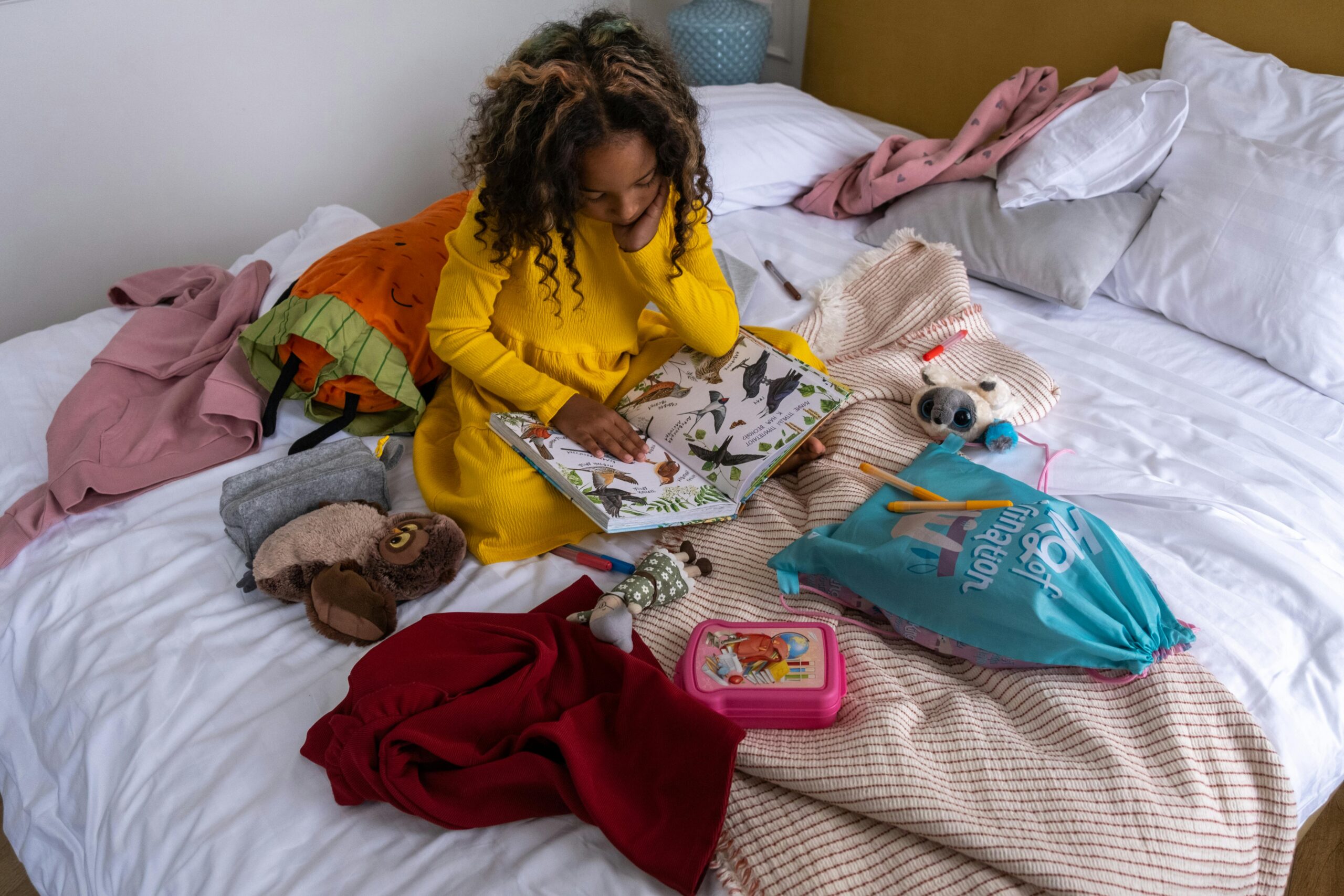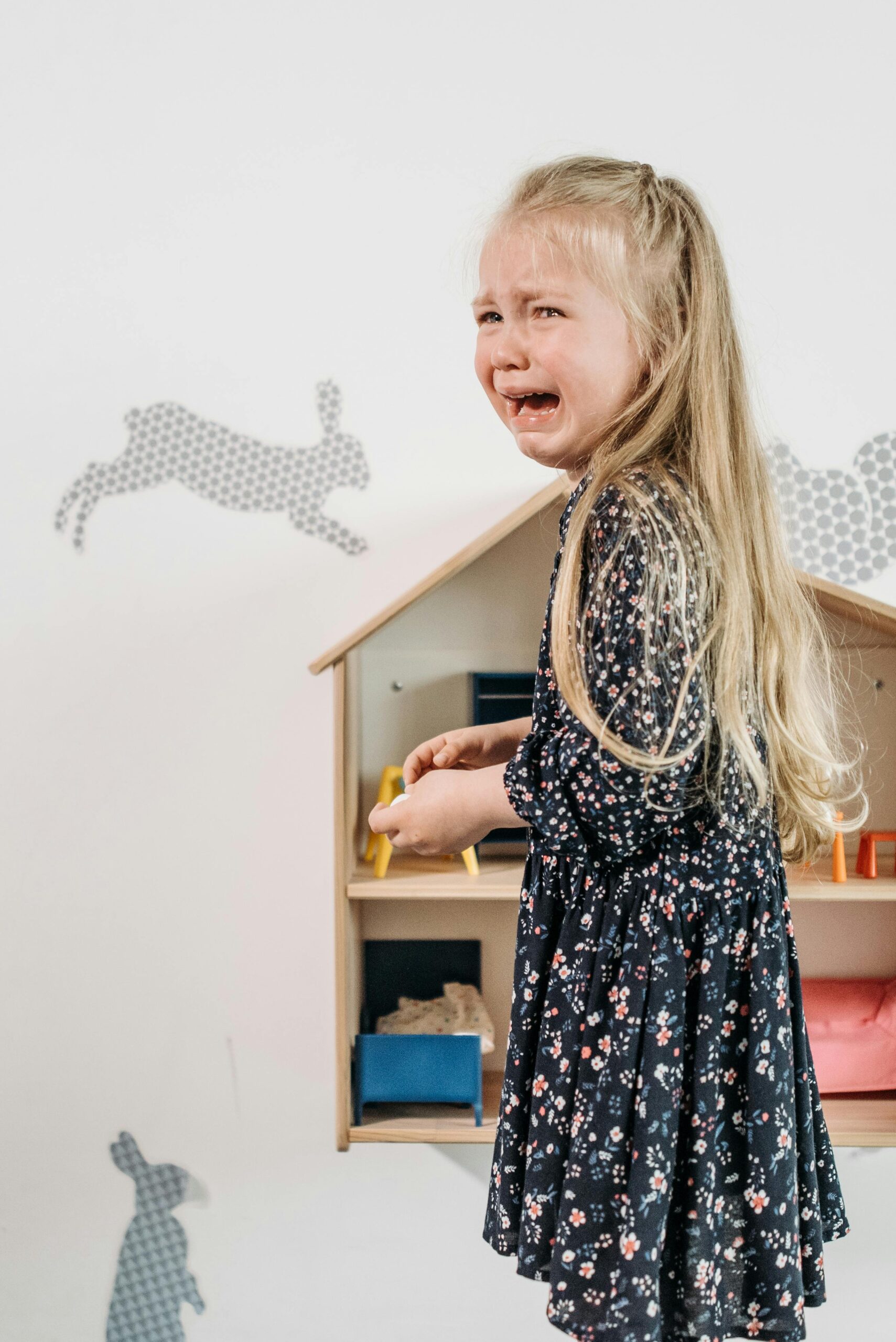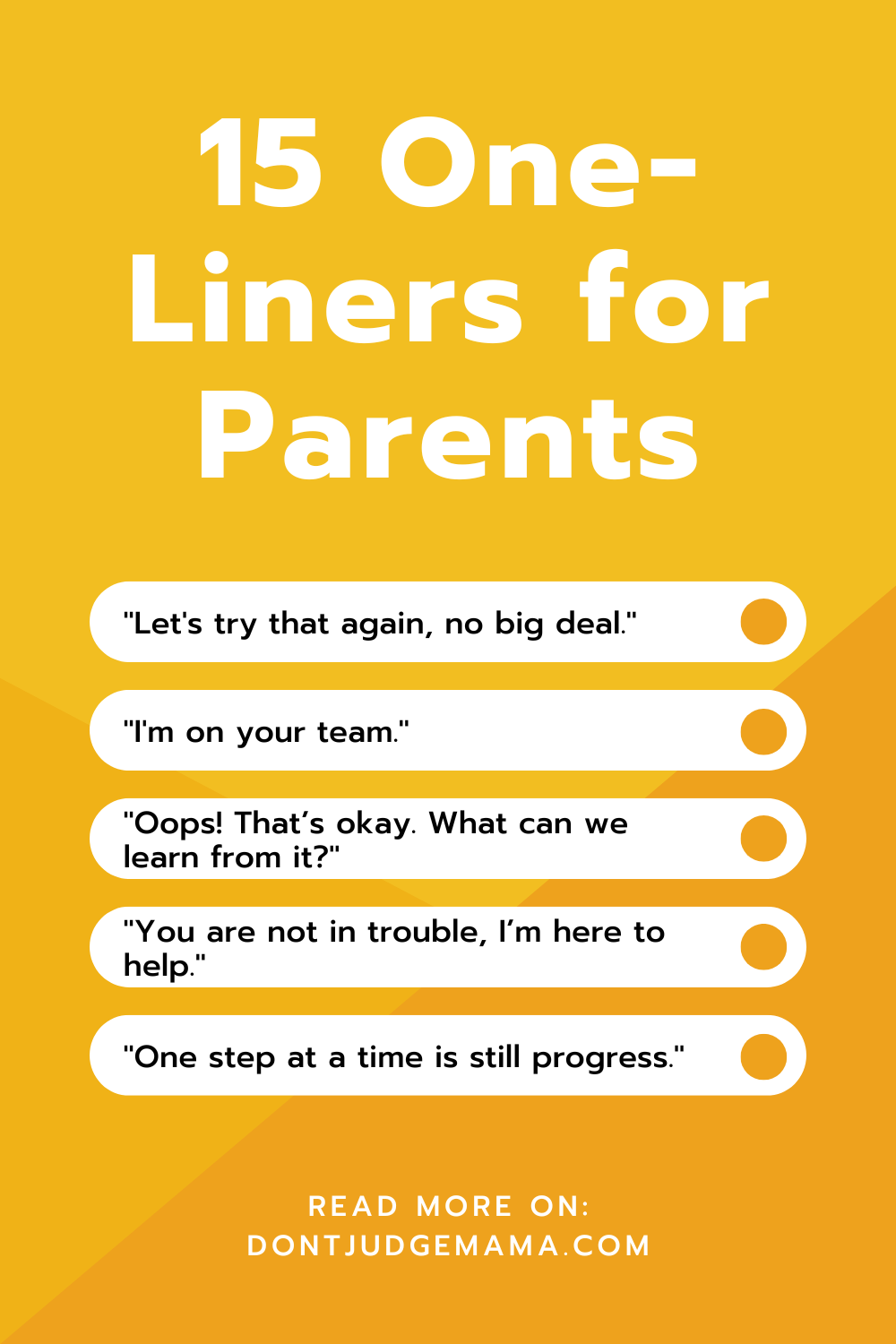The Power of Praise: How Positive Reinforcement Can Change Your Child’s Behavior
As a special education teacher, I know firsthand the POWER of positive reinforcement. When implemented consistently, it can significantly impact a child’s behavior. Positive reinforcement is a simple yet effective parenting hack that is something my husband and I focus on for our own child with ADHD. I’ve seen how it can shape behavior, build confidence, and strengthen our connection with her.
What is Positive Reinforcement?
In simple terms, positive reinforcement means adding something positive immediately after a behavior you want to encourage. It’s like giving a little nudge in the right direction by rewarding progress, effort, or success. This could be praise, extra playtime, a small treat, or even a high five. The goal is to make your child feel good about what they did, which increases the chances of them repeating the behavior.
Why Does Positive Reinforcement Work So Well?
Neurodiverse kids often experience more correction than celebration. They hear “stop that” or “don’t do that” far more often than “great job!” Positive reinforcement shifts the focus to what they’re doing right. It highlights strengths, builds motivation, and creates more positive interactions throughout the day.
Verbal Praise
Verbal praise is one of the easiest and most effective forms of positive reinforcement. It involves expressing positive feedback or approval to acknowledge effort, achievement, or behavior. Simple phrases like “Great job completing your homework before dinner!” or “I’m proud of how you cleaned your room today!” reinforce desired actions, boost confidence, and foster motivation.
How to Make Verbal Praise Work:
- Catch the Good Stuff – We often notice what our kids aren’t doing. Flip the script! Look for small wins. Did they sit for five minutes without getting up? Say, “Wow, I love how you stayed in your seat!”
- Be Specific – Instead of general praise like “good job,” describe exactly what they did well. “You remembered to hang up your backpack all by yourself. That’s awesome!”
- Be Consistent (But Not Perfect) – You don’t need to catch every good behavior. Aim for a 4:1 ratio of positive to negative comments. This keeps the focus on their strengths.
- Celebrate Effort, Not Just Results – Kids with learning or behavioral challenges may not always hit the mark, but effort is worth celebrating. “I saw you working hard on that math problem. I’m proud of you for sticking with it!”
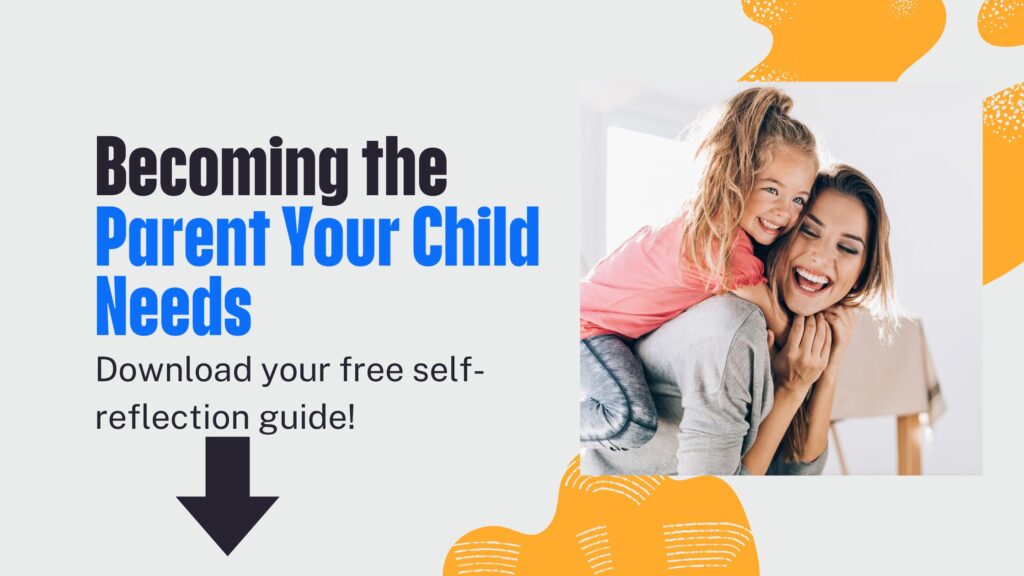
Take the first step toward becoming the parent your child truly needs with this free self-reflection guide! Click HERE to get the free guide.
Real-Life Example:
My daughter struggles to stay focused during homework time. One day, instead of nagging her to finish, I decided to catch her when she was on task. I said, “Hey, you’ve been working for 10 minutes straight! That’s awesome. How about a five-minute dance break?” Homework went from a battle to a bonding moment.
Positive Reinforcement Charts
Along with verbal praise, a reward system at home can be incredibly effective. With a reward chart, you can focus on a few targeted behaviors and provide specific rewards for achieving them.
Steps to Create a Positive Reinforcement Chart:
- Choose 1-3 Target Behaviors – More than three can overwhelm both you and your child. Examples might include:
- Be at the kitchen table by 7 AM for school days
- Put away your backpack, shoes, and coat after school
- Complete homework without drama (our personal favorite!)
- Involve Your Child – Discuss the target behaviors and allow your child to help pick them. This creates buy-in and gives them a sense of control.
- Set Realistic Rewards – Not every child is motivated by stickers. Tailor rewards to their interests. Consider:
- Extra video game time
- A trip to the park
- Allowance money
- Track Progress – Use a jar of tickets, stickers, or a chart. For my 9-year-old, we use this behavior chart:
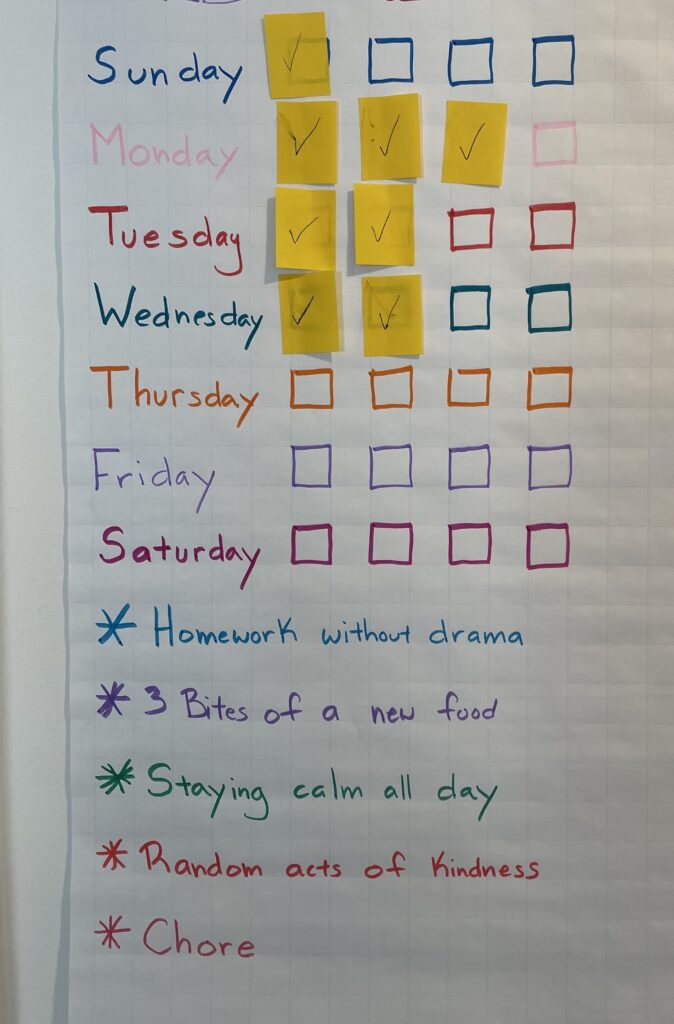
As you can see the targeted behaviors are clearly listed at the bottom. I know we have more than three, but the real targets for us are homework without drama and staying calm all day. The other ones are extra “bonus” ones for her. At the end of each day, we check off the ones she’s accomplished. Each check mark equals 50 cents, which she counts at the end of the week for her allowance. I simply remove the post-it check marks and reuse the chart for the next week.
Why I Love the Allowance System
Having an allowance has been a game-changer! When my daughter wants to buy something at the store, I simply say, “Sure, you can use your allowance.” Most of the time, she rethinks the purchase. Crisis averted – win-win!
We use the Greenlight card to manage her allowance. It’s a debit card for kids managed through an app, helping them learn about saving, spending, and budgeting while giving us, as parents, control over spending.
The Greenlight card also has some neat features that can double as your positive reinforcement chart if you and/or your child are into tech. My daughter had a goal to save $100 and she has! She’s very particular about how she chooses to spend her money and she’s learning so much about money management and impulse control when it comes to spending. This is a very important skill that I believe all kids, especially those with ADHD, need to learn.
Final Thoughts
Check in on your reward system regularly and adjust as needed. If your child masters a behavior for six weeks, switch to a new one. If they’re struggling, reconsider the goal or provide more support.
Focusing on positive reinforcement doesn’t mean ignoring challenging behavior, but it shifts the balance. Your child experiences more encouragement and success, which leads to meaningful, long-term changes. As both a teacher and a mom, I can tell you – these little celebrations add up!
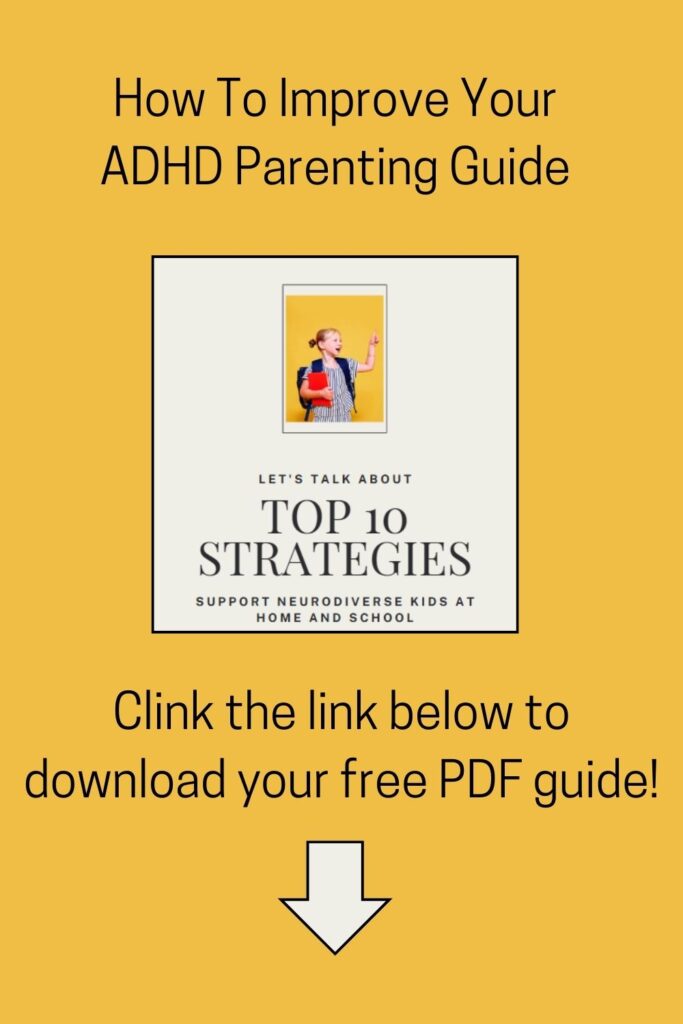
Check out this FREE resource: Top 10 Strategies to Support Neurodiverse Kids at Home and School! Click HERE to get the resource.


